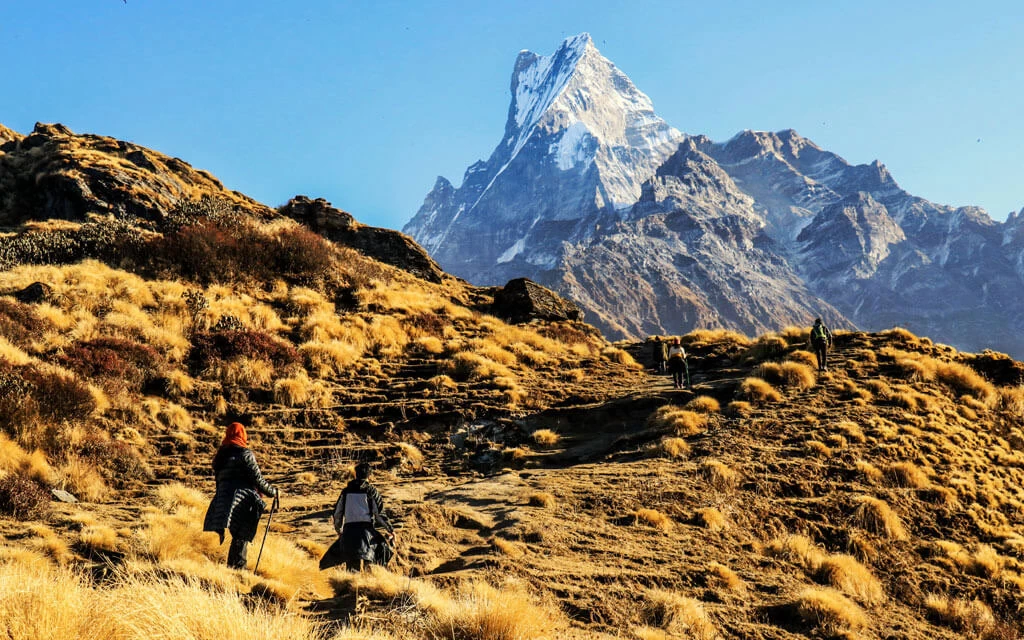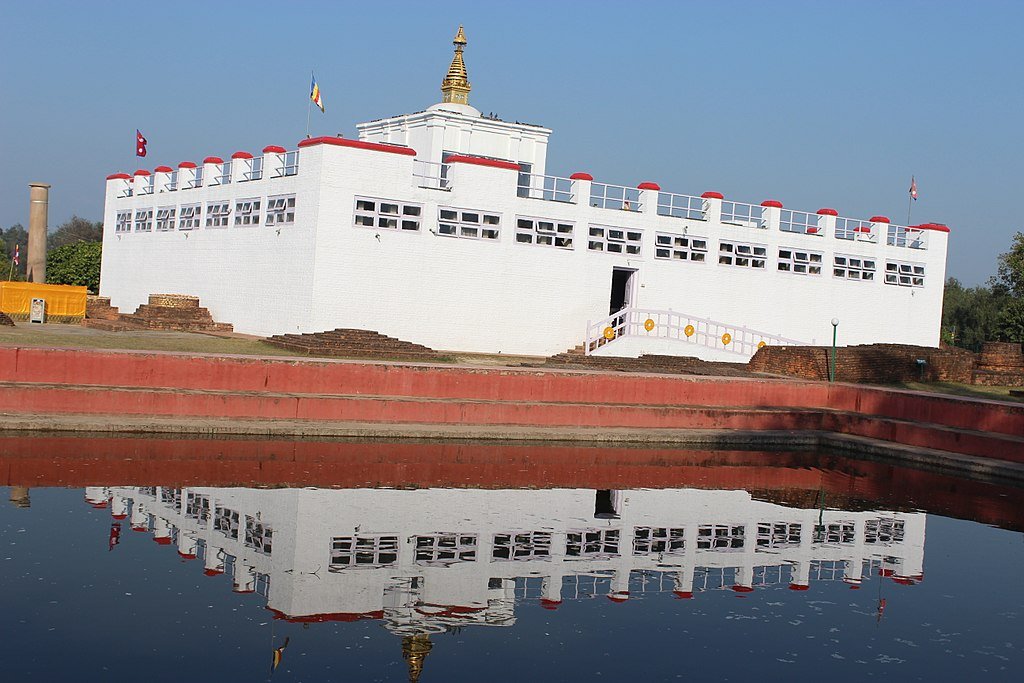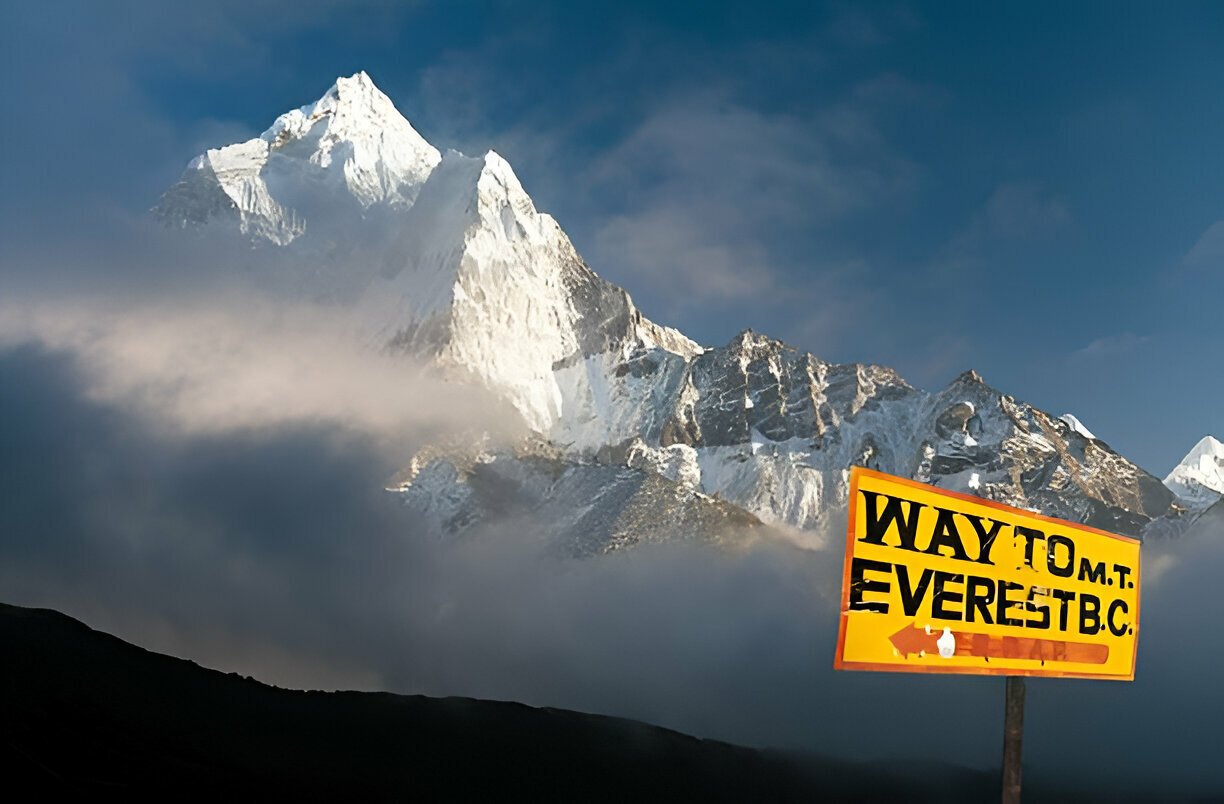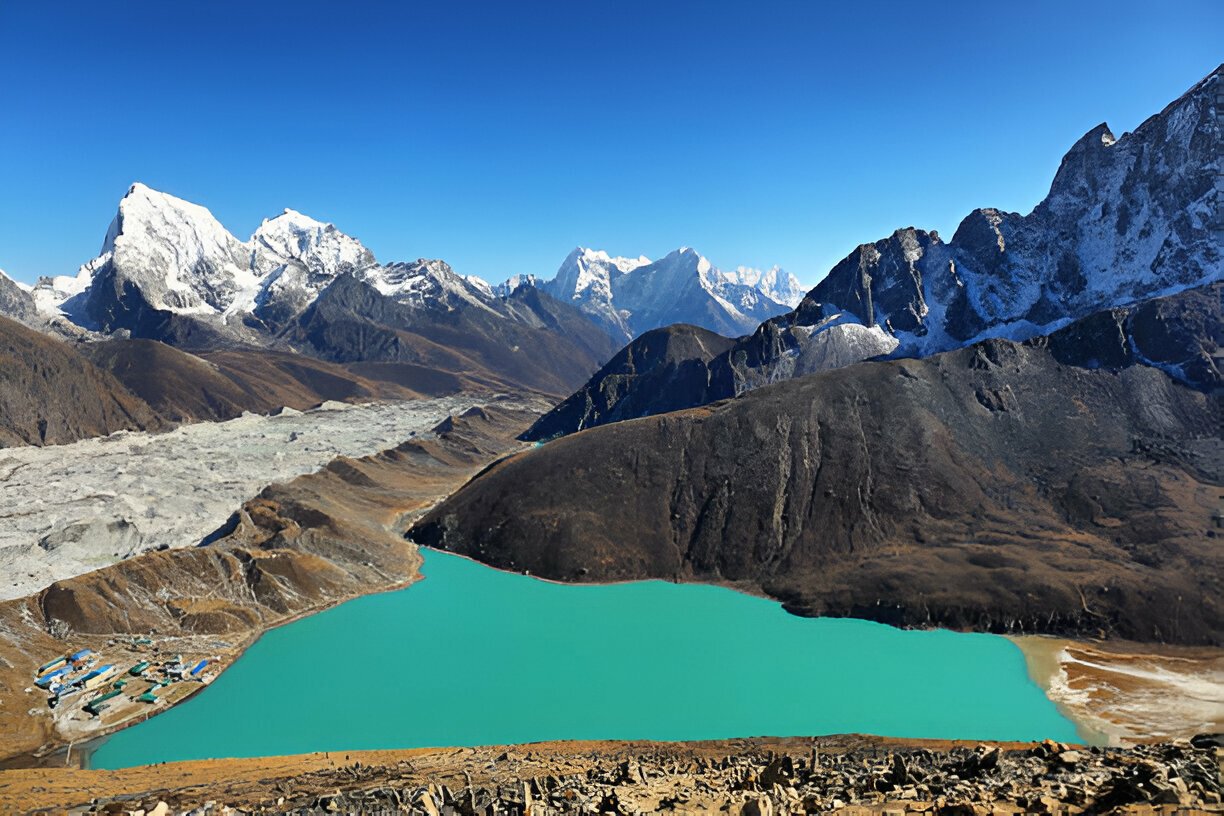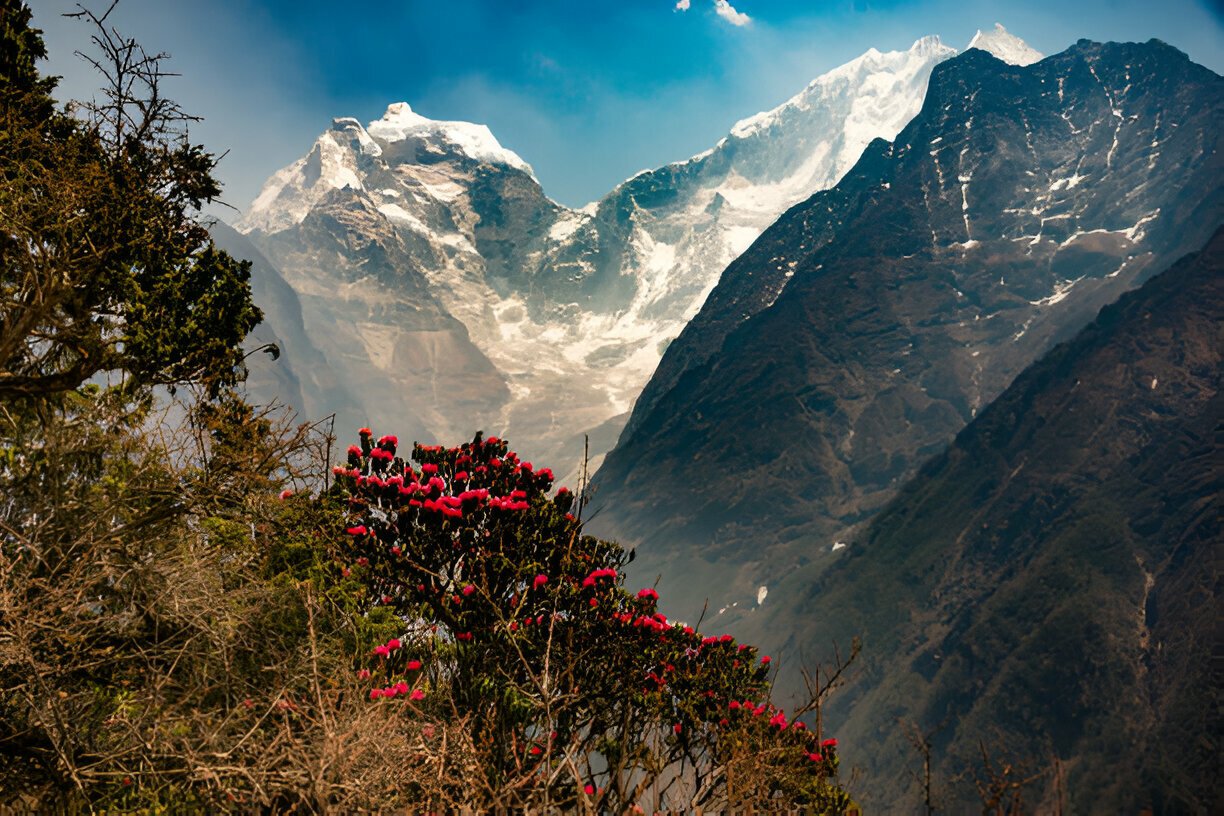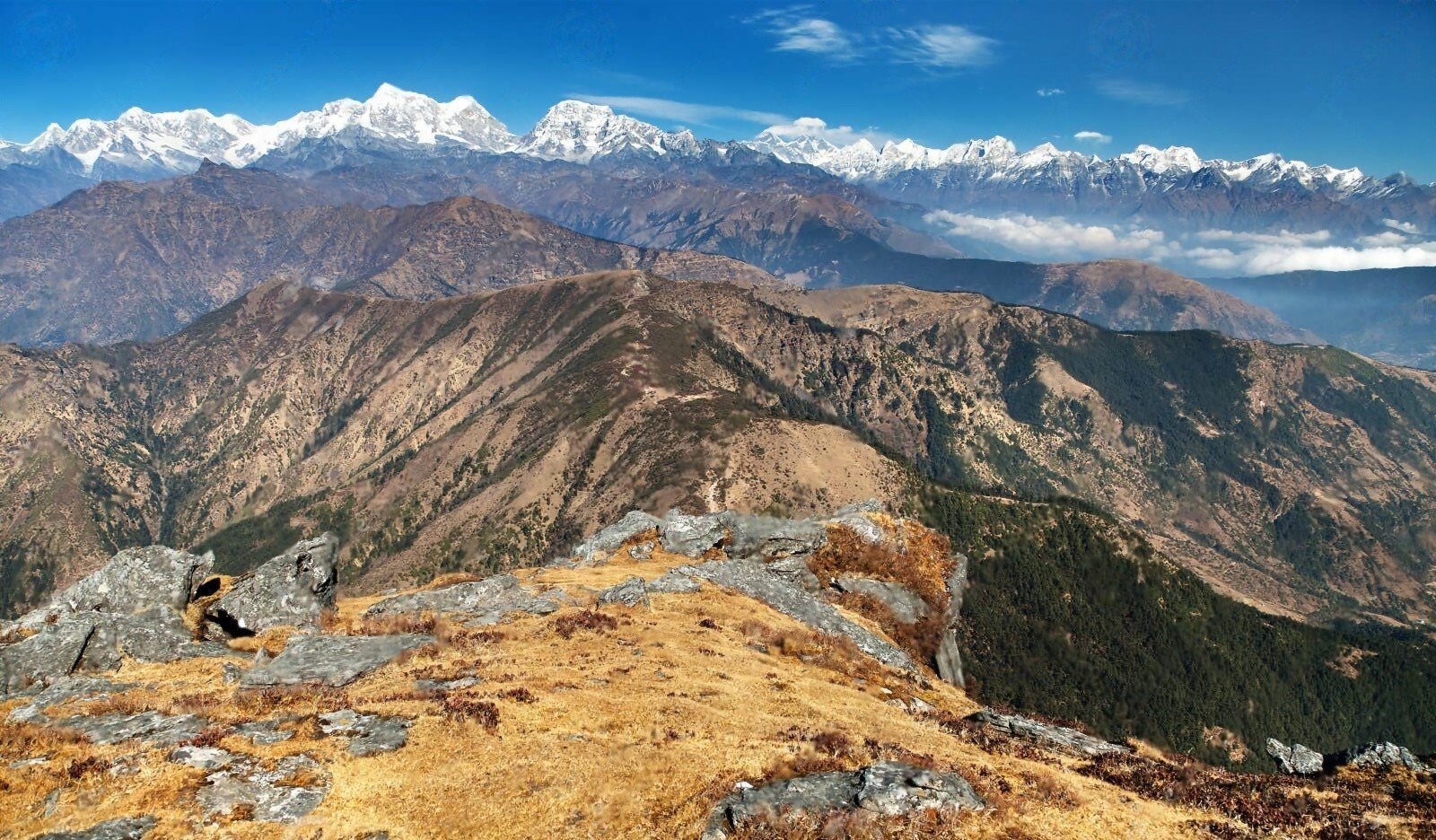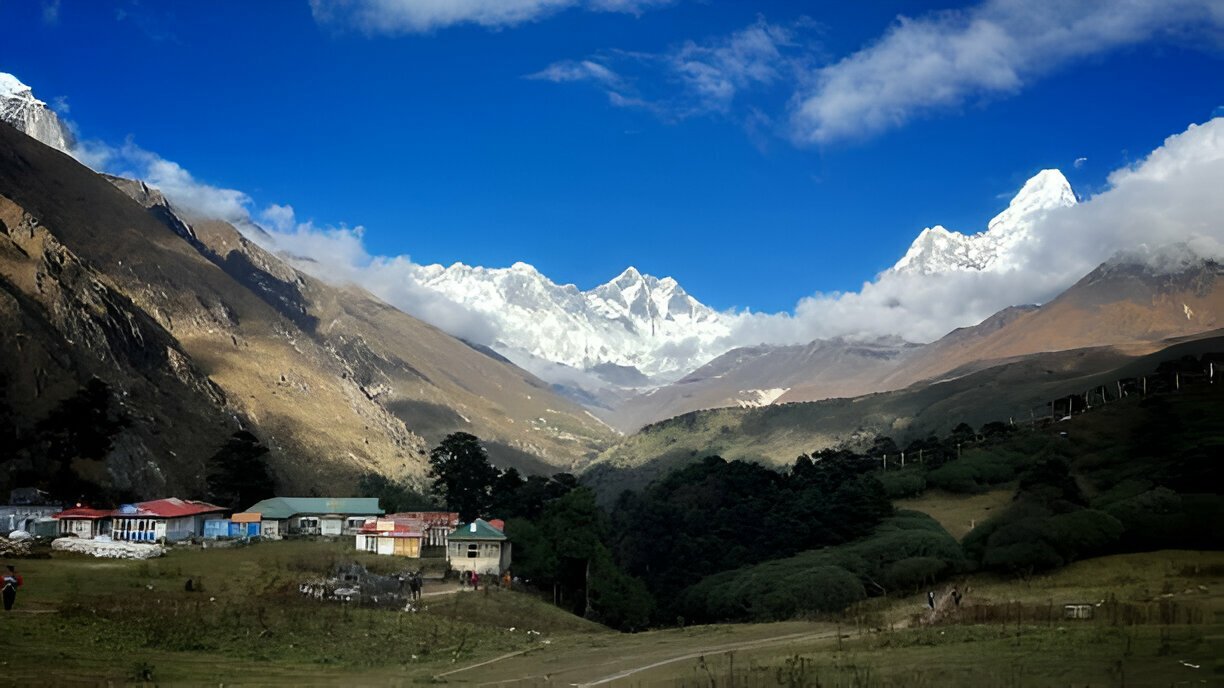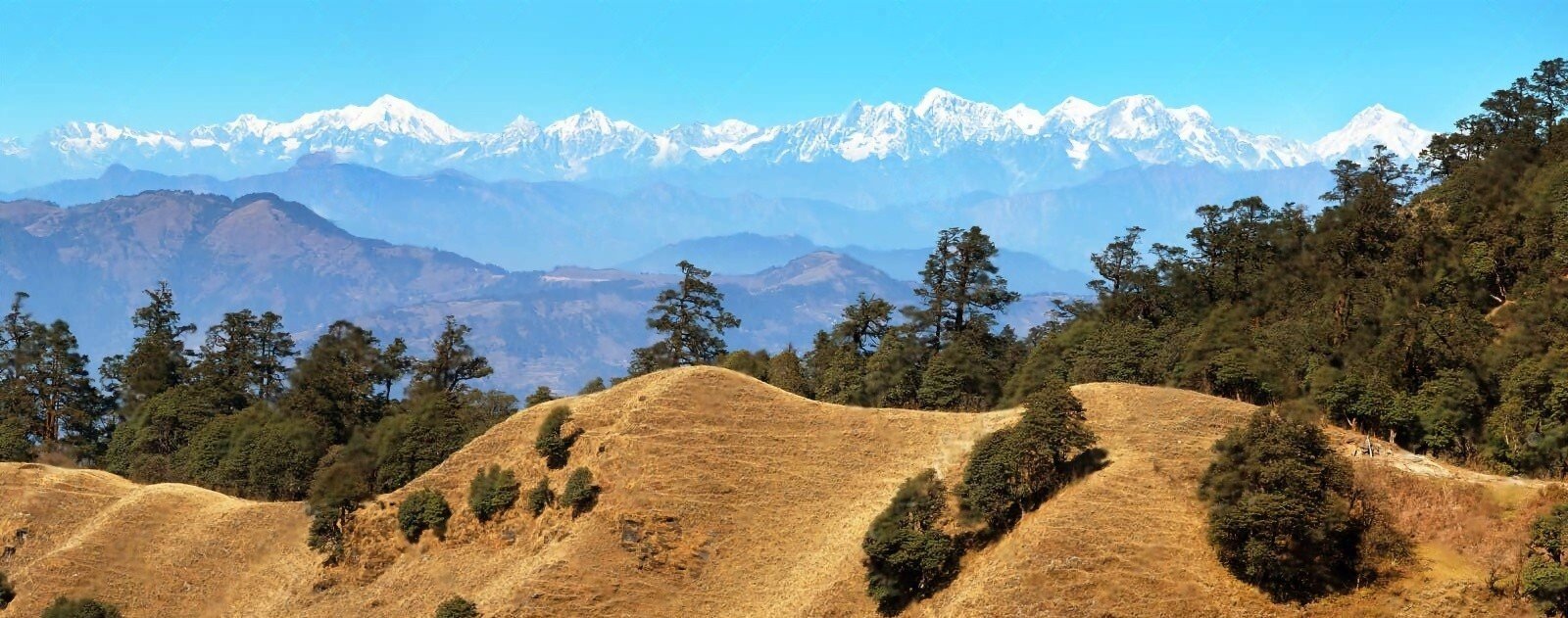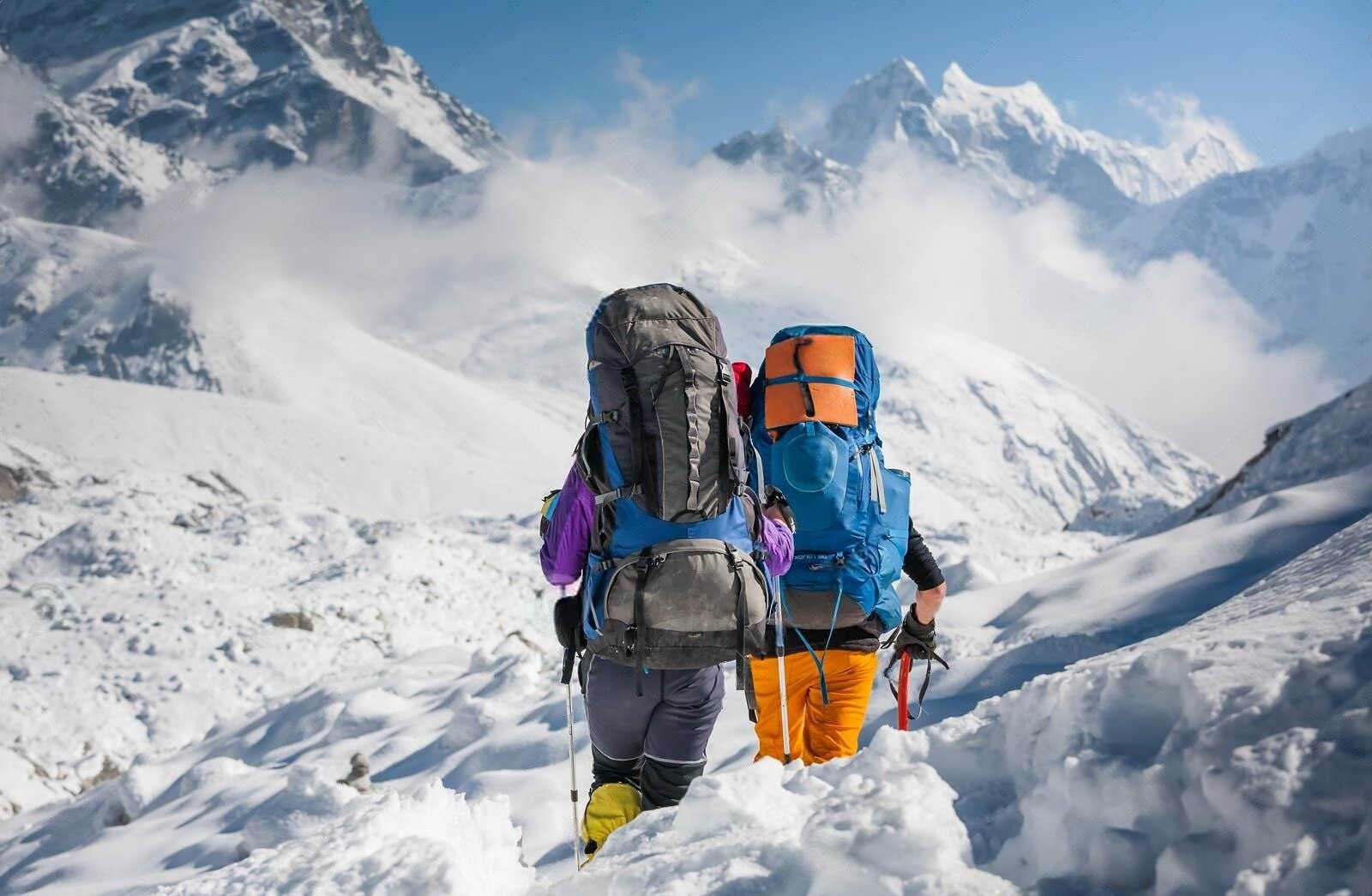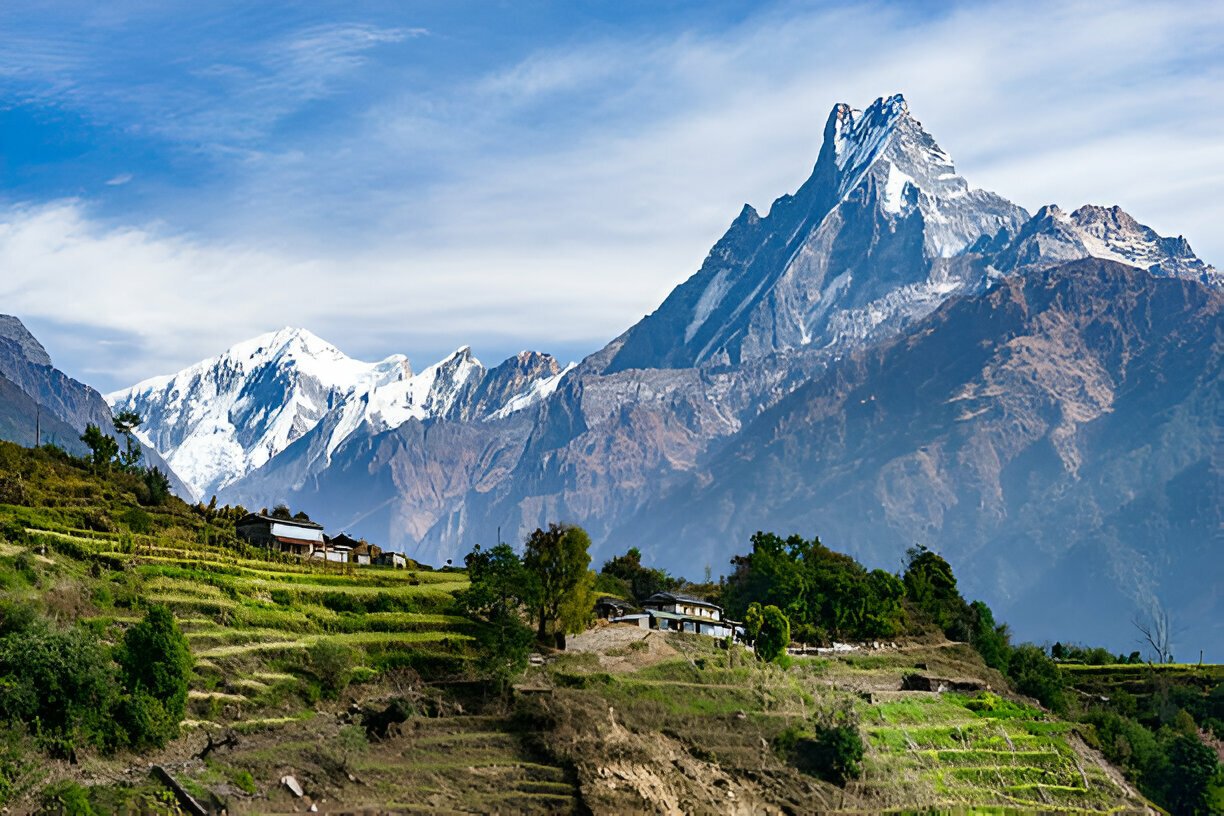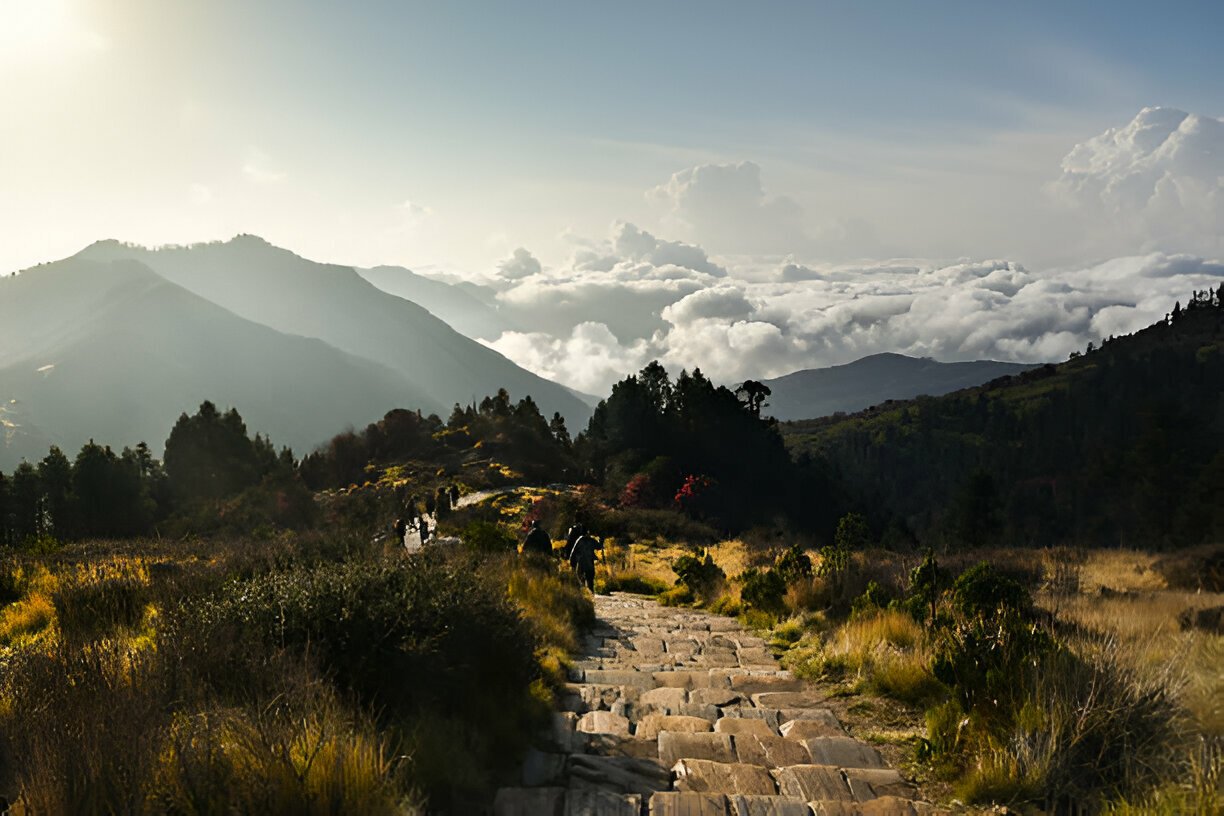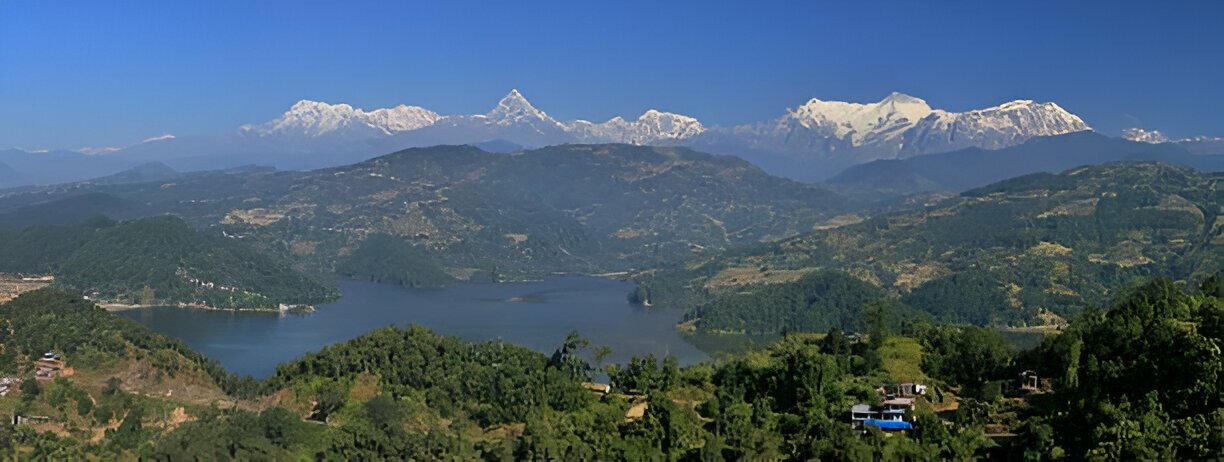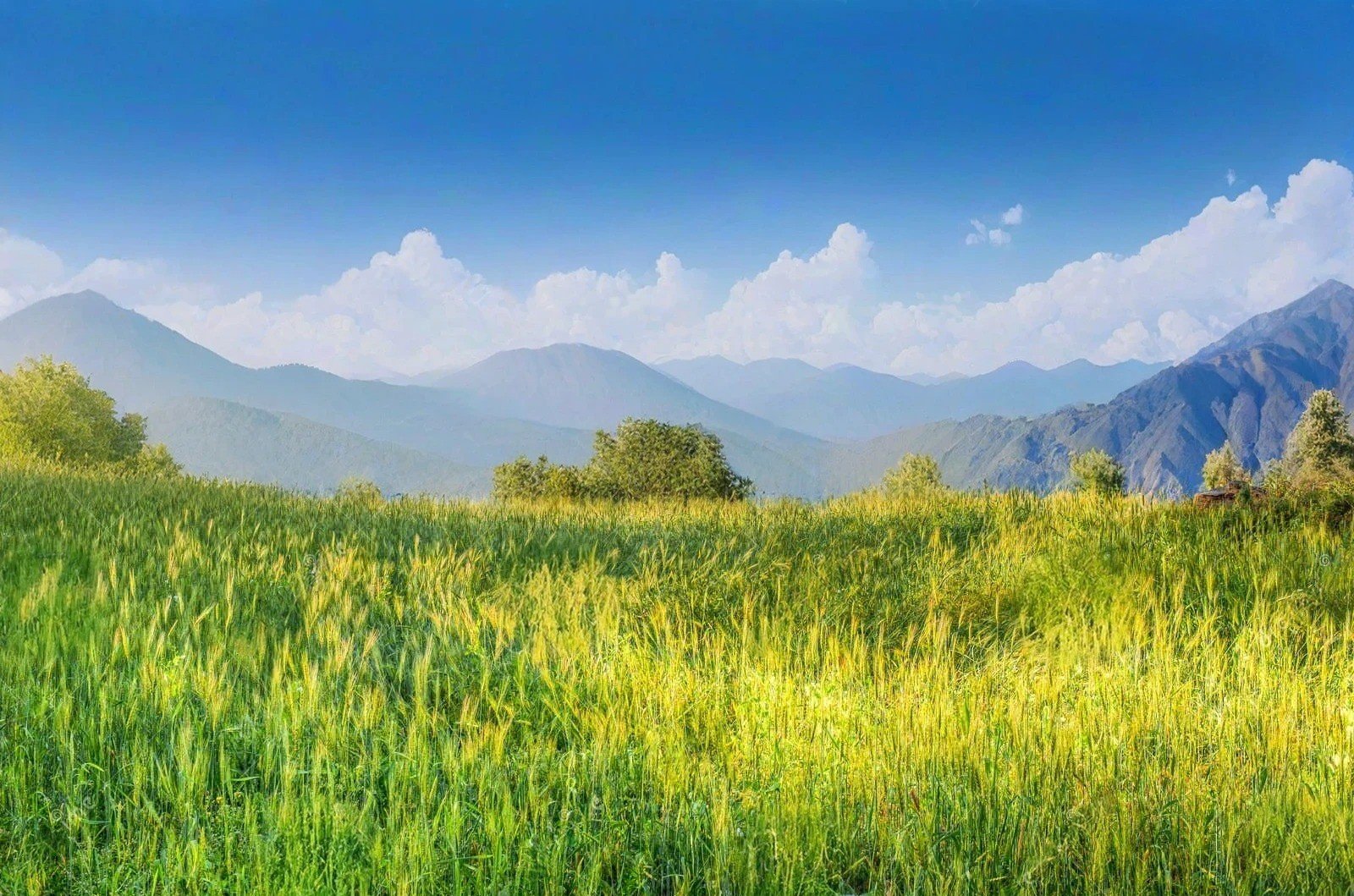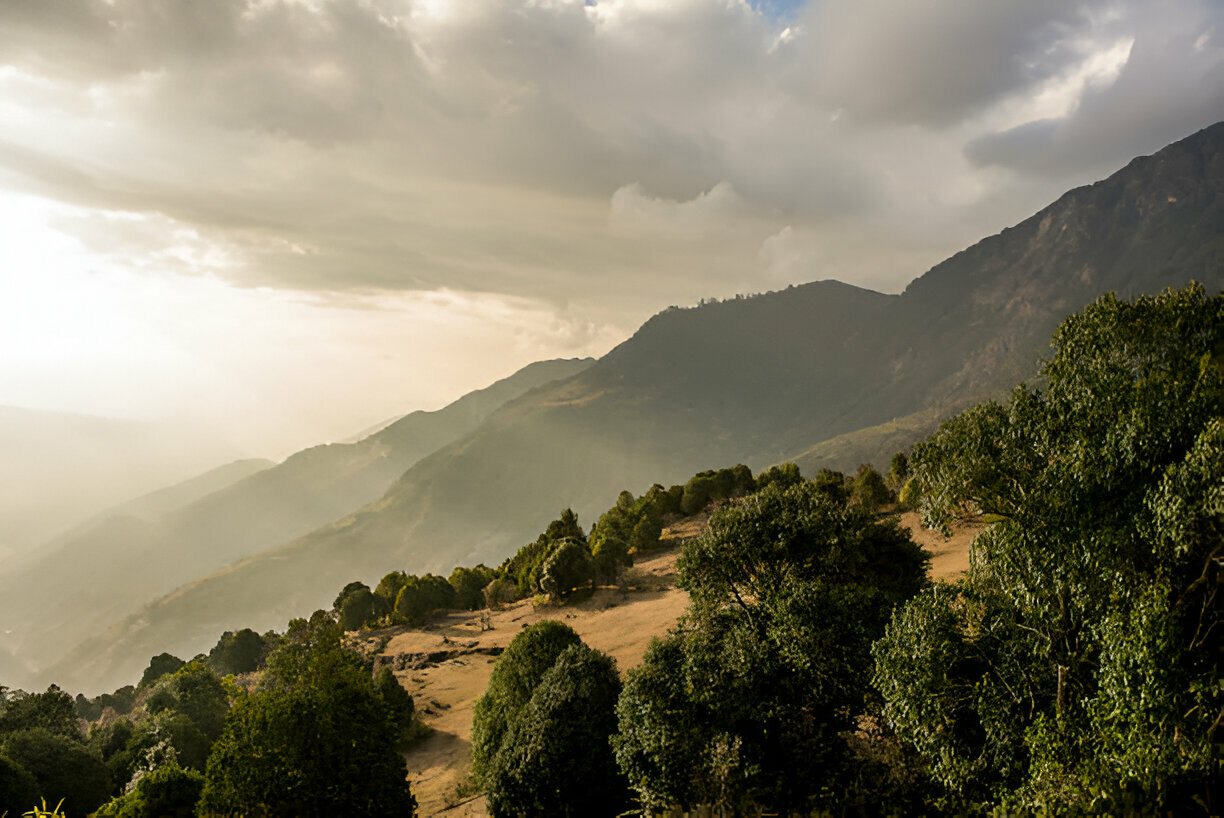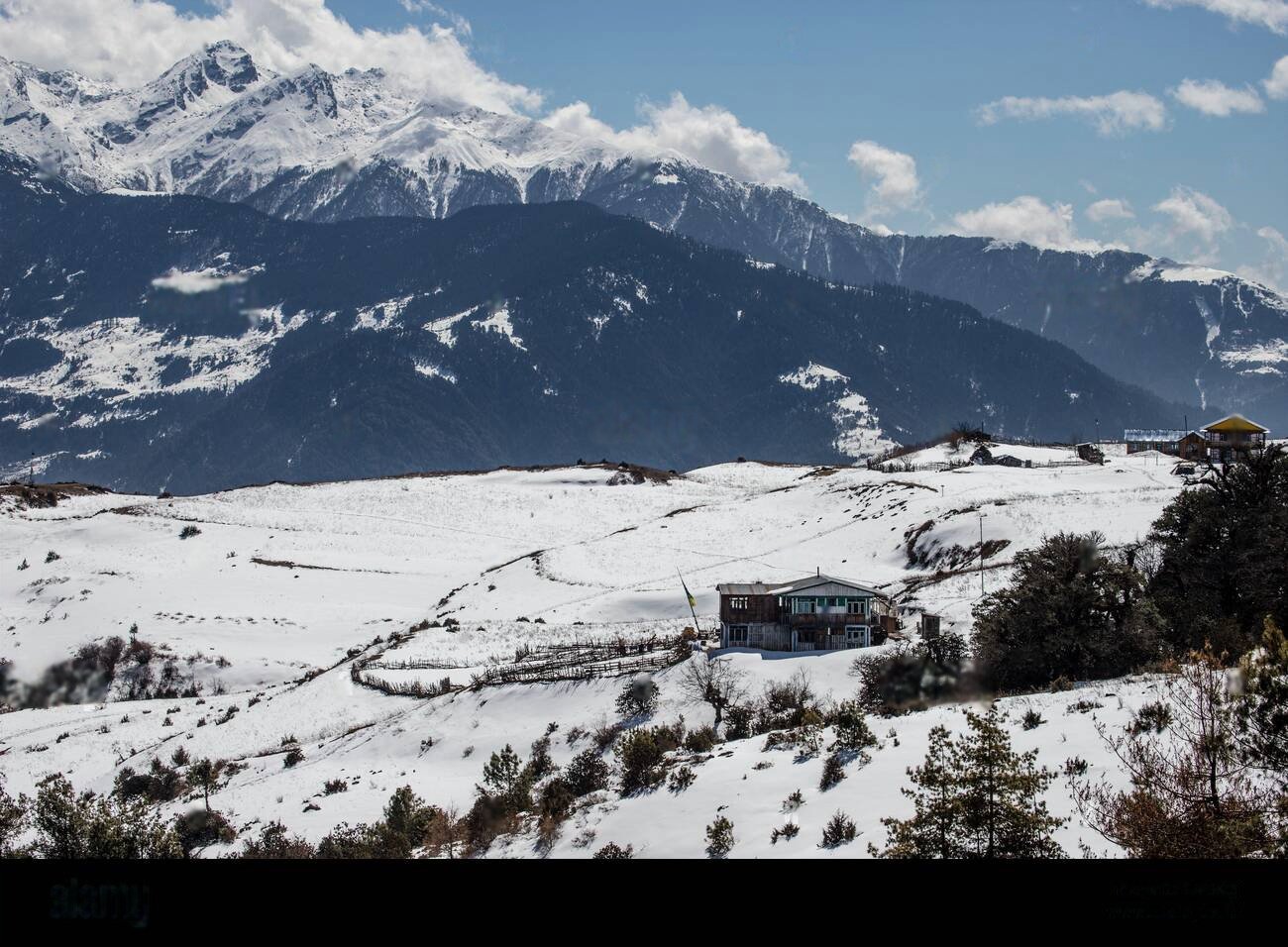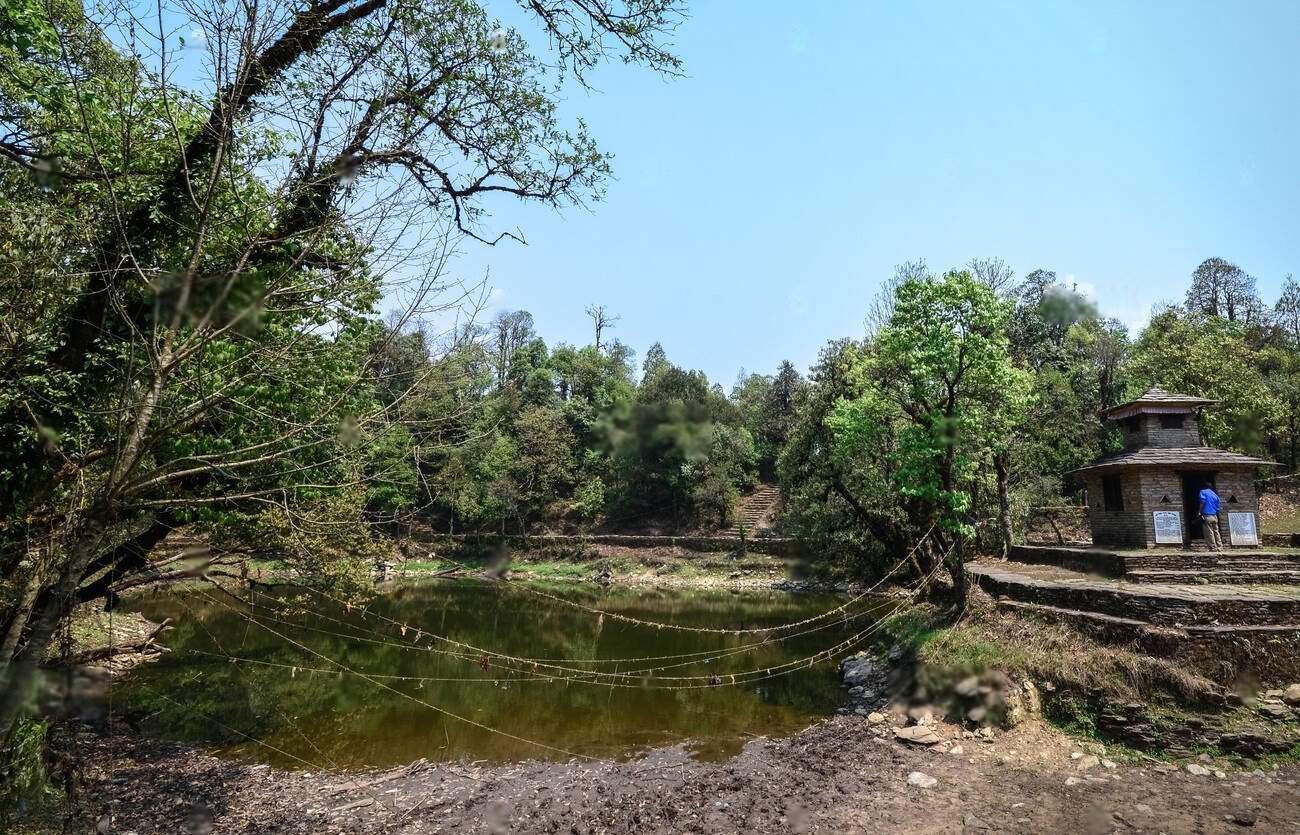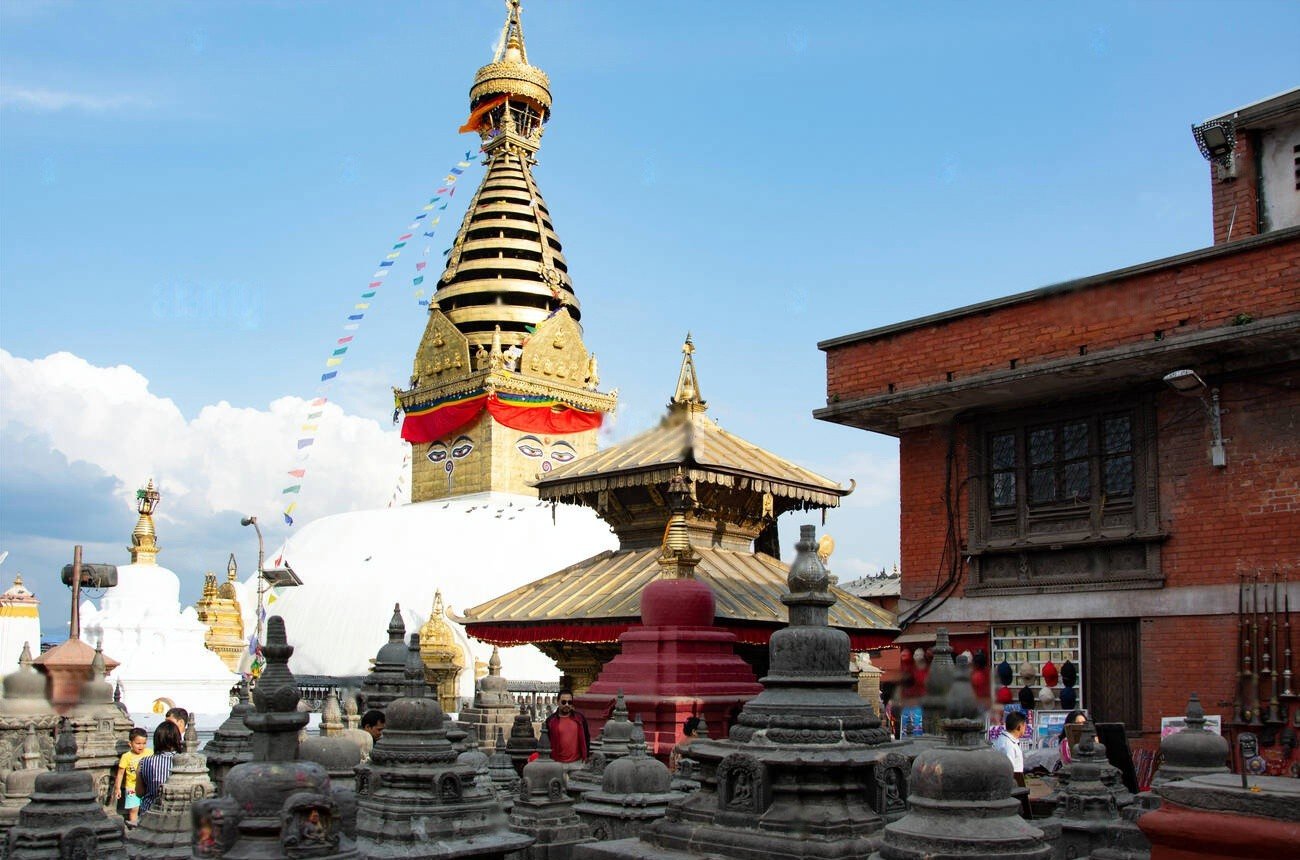 Detailed Information
Detailed Information
Visiting Khaptad National Park and its sacred ashram creates an experience that transcends conventional tourism, offering a rare combination of spiritual pilgrimage, ecological discovery, and cultural immersion in one of Nepal's least-altered landscapes. What sets Khaptad apart from other Nepalese destinations is its unique atmosphere of isolated serenity, a quality immediately apparent as you reach the plateau after ascending through dense forests and steep terrain.
The journey to Khaptad itself forms an integral part of the experience, with each traditional approach route passing through distinctly different ecosystems and cultural landscapes. Whether starting from Silgadhi in Doti, Jhingrana in Bajhang, or Tamel in Achham, travelers traverse mountain villages where life continues much as it has for centuries, with agricultural practices, architectural styles, and cultural traditions largely unchanged by modernization. Local inhabitants share stories of Khaptad Baba's miracles and teachings that have been passed down through generations, creating a sense of anticipation as you climb higher toward the plateau.
Upon reaching the park boundary, the landscape opens dramatically to reveal the distinctive patans (meadows) that give Khaptad its nickname "Nepal's Switzerland." These natural grasslands stretch across the undulating plateau, punctuated by small lakes, patches of rhododendron and oak forest, and distant hills. During spring and early summer, the meadows transform into spectacular wildflower displays with over 300 species in bloom, creating carpets of color that change weekly as different species reach their peak. The open landscape allows for unobstructed views of surrounding hills and, on clear days, distant Himalayan peaks including Api and Saipal.
The centerpiece of many visits is the Khaptad Baba Ashram, a collection of simple structures that include the sage's living quarters, meditation caves, and temples dedicated to various Hindu deities. Unlike the elaborate temple complexes found elsewhere in Nepal, the ashram maintains an atmosphere of austere simplicity that reflects the Baba's teachings on renunciation and spiritual focus. Resident sadhus (holy men) who continue the Baba's traditions welcome respectful visitors, sometimes sharing insights from their meditative practices or stories about the sage. The ashram comes alive particularly during full moon days and the annual Ganga Dashara festival when pilgrims arrive from throughout the region.
What many visitors find most remarkable about Khaptad is the quality of silence that pervades the landscape a profound quietness broken only by birdsong, wind through pine needles, or distant bells from grazing livestock. This natural silence creates an ideal environment for contemplation, whether one is spiritually inclined or simply seeking respite from the noise of modern life. Many visitors report experiencing an unusual clarity of thought and emotional peace during their stay, effects that locals attribute to both the rarefied mountain air and the spiritual energy accumulated through decades of meditation practice in the area.
The natural environment provides endless opportunities for exploration, with well-marked trails leading to features like Khaptad Daha (a sacred lake), Nagdhunga (a distinctive rock formation resembling a cobra hood), and various viewpoints overlooking the surrounding valleys. Wildlife encounters, though typically requiring patience and quiet observation, might include glimpses of musk deer, Himalayan black bear, or the vivid plumage of pheasants and other birds. The park's remarkable biodiversity is most evident in its plant life, particularly medicinal herbs that have been utilized in Ayurvedic and traditional Tibetan medicine for centuries.
Throughout the year, the experience of Khaptad shifts dramatically with the seasons. Spring brings vibrant new growth and wildflower displays; summer offers lush greenery but occasional monsoon mists; autumn provides crystal-clear mountain views and pleasant temperatures; winter transforms the landscape with occasional snow that creates a hushed, contemplative atmosphere. Each season reveals different aspects of this remarkable ecosystem, rewarding return visits with fresh perspectives on what initially appears to be a simple landscape but reveals endless complexity upon closer examination.
What remains constant throughout the seasons is Khaptad's atmosphere of being somewhat outside ordinary time a quality that attracts both pilgrims seeking spiritual connection and travelers looking to experience a Nepal that exists beyond the well-trodden tourist paths. In this remote highland sanctuary, the boundaries between natural beauty and spiritual presence seem to dissolve, creating an experience that visitors often describe as transformative in ways that transcend conventional categories of travel or tourism.
Visiting Khaptad National Park and its sacred ashram creates an experience that transcends conventional tourism, offering a rare combination of spiritual pilgrimage, ecological discovery, and cultural immersion in one of Nepal's least-altered landscapes. What sets Khaptad apart from other Nepalese destinations is its unique atmosphere of isolated serenity, a quality immediately apparent as you reach the plateau after ascending through dense forests and steep terrain.
The journey to Khaptad itself forms an integral part of the experience, with each traditional approach route passing through distinctly different ecosystems and cultural landscapes. Whether starting from Silgadhi in Doti, Jhingrana in Bajhang, or Tamel in Achham, travelers traverse mountain villages where life continues much as it has for centuries, with agricultural practices, architectural styles, and cultural traditions largely unchanged by modernization. Local inhabitants share stories of Khaptad Baba's miracles and teachings that have been passed down through generations, creating a sense of anticipation as you climb higher toward the plateau.
Upon reaching the park boundary, the landscape opens dramatically to reveal the distinctive patans (meadows) that give Khaptad its nickname "Nepal's Switzerland." These natural grasslands stretch across the undulating plateau, punctuated by small lakes, patches of rhododendron and oak forest, and distant hills. During spring and early summer, the meadows transform into spectacular wildflower displays with over 300 species in bloom, creating carpets of color that change weekly as different species reach their peak. The open landscape allows for unobstructed views of surrounding hills and, on clear days, distant Himalayan peaks including Api and Saipal.
The centerpiece of many visits is the Khaptad Baba Ashram, a collection of simple structures that include the sage's living quarters, meditation caves, and temples dedicated to various Hindu deities. Unlike the elaborate temple complexes found elsewhere in Nepal, the ashram maintains an atmosphere of austere simplicity that reflects the Baba's teachings on renunciation and spiritual focus. Resident sadhus (holy men) who continue the Baba's traditions welcome respectful visitors, sometimes sharing insights from their meditative practices or stories about the sage. The ashram comes alive particularly during full moon days and the annual Ganga Dashara festival when pilgrims arrive from throughout the region.
What many visitors find most remarkable about Khaptad is the quality of silence that pervades the landscape a profound quietness broken only by birdsong, wind through pine needles, or distant bells from grazing livestock. This natural silence creates an ideal environment for contemplation, whether one is spiritually inclined or simply seeking respite from the noise of modern life. Many visitors report experiencing an unusual clarity of thought and emotional peace during their stay, effects that locals attribute to both the rarefied mountain air and the spiritual energy accumulated through decades of meditation practice in the area.
The natural environment provides endless opportunities for exploration, with well-marked trails leading to features like Khaptad Daha (a sacred lake), Nagdhunga (a distinctive rock formation resembling a cobra hood), and various viewpoints overlooking the surrounding valleys. Wildlife encounters, though typically requiring patience and quiet observation, might include glimpses of musk deer, Himalayan black bear, or the vivid plumage of pheasants and other birds. The park's remarkable biodiversity is most evident in its plant life, particularly medicinal herbs that have been utilized in Ayurvedic and traditional Tibetan medicine for centuries.
Throughout the year, the experience of Khaptad shifts dramatically with the seasons. Spring brings vibrant new growth and wildflower displays; summer offers lush greenery but occasional monsoon mists; autumn provides crystal-clear mountain views and pleasant temperatures; winter transforms the landscape with occasional snow that creates a hushed, contemplative atmosphere. Each season reveals different aspects of this remarkable ecosystem, rewarding return visits with fresh perspectives on what initially appears to be a simple landscape but reveals endless complexity upon closer examination.
What remains constant throughout the seasons is Khaptad's atmosphere of being somewhat outside ordinary time a quality that attracts both pilgrims seeking spiritual connection and travelers looking to experience a Nepal that exists beyond the well-trodden tourist paths. In this remote highland sanctuary, the boundaries between natural beauty and spiritual presence seem to dissolve, creating an experience that visitors often describe as transformative in ways that transcend conventional categories of travel or tourism.
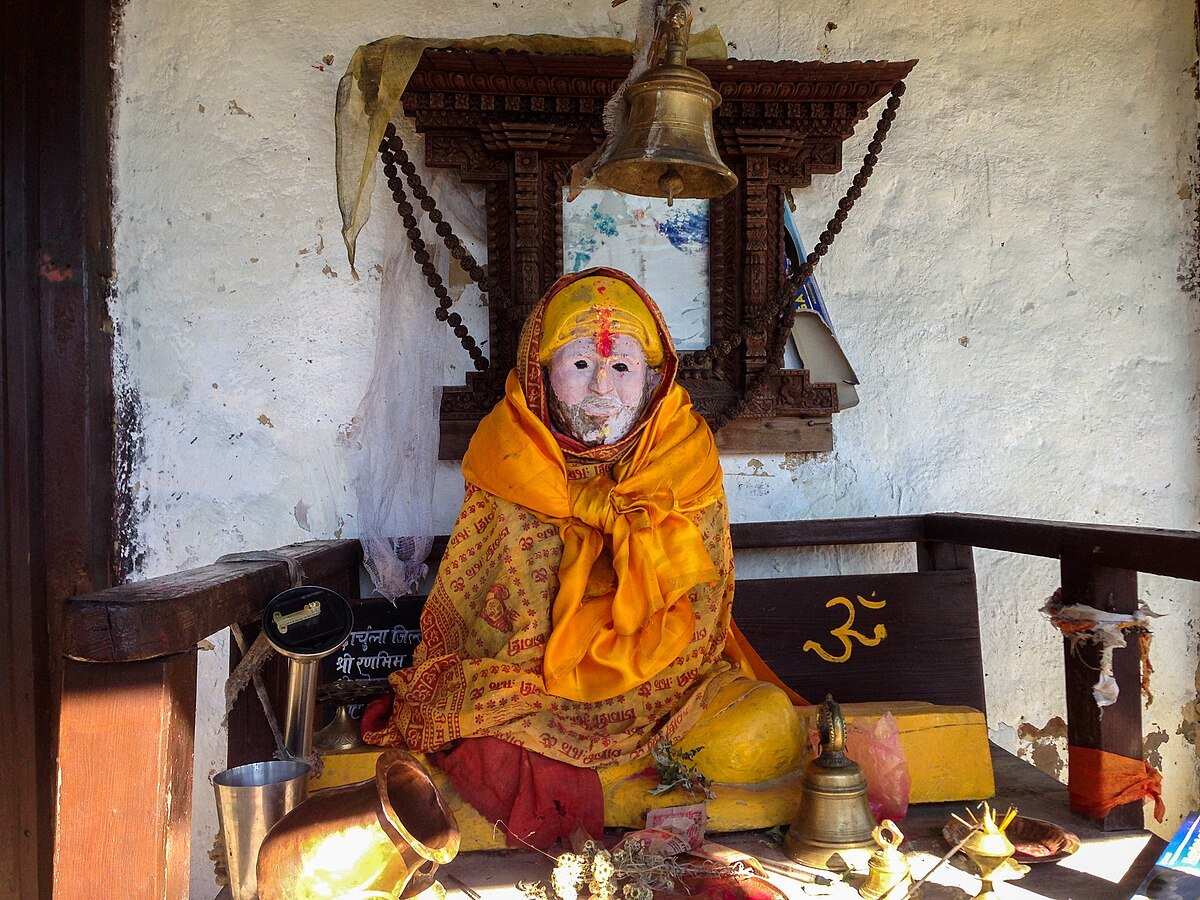
From $0
Price Varies from Group Size
Success
Here goes about why the success toast occurred.
 Activity Outline
Activity Outline
Five-Day Khaptad Journey
Departure and Initial Trek
Begin your journey from Silgadhi, the district headquarters of Doti and one of the main gateways to Khaptad. After necessary permit arrangements at the park office, start the ascending trail that initially passes through terraced fields and scattered rural settlements. The path gradually transitions into forest dominated by rhododendron, oak, and pine species. This section offers excellent bird watching opportunities, particularly for Himalayan species like the satyr tragopan and kalij pheasant. Highlight: Visit a traditional Far-Western Nepali village along the route where distinctive architectural elements include intricately carved wooden windows and doors that reflect cultural influences from both Himalayan and Indian traditions
Forest Ascent
Continue climbing through increasingly dense forest with occasional clearings that offer views back down toward the valleys below. The trail becomes steeper in sections with stone steps built into the more challenging parts. This forest zone represents one of Nepal's best-preserved middle-elevation woodland ecosystems, hosting numerous medicinal plants and fungi used in traditional healing practices. Highlight: Your guide can identify various medicinal plants along the trail, including Jatamansi (Nardostachys jatamansi) and Kutki (Picrorhiza kurroa) that have been harvested sustainably by local communities for generations.
Lunch Break at Forest Clearing
Stop at a traditional rest point where trekkers and pilgrims have paused for generations. These locations, often marked by stone platforms under large trees, provide natural shelter and sometimes small springs for water. Enjoy a packed lunch while resting for the afternoon climb. Highlight: These traditional rest points often feature small shrines or religious markers where travelers have left offerings for safe passage a practice that connects modern trekkers to pilgrim traditions centuries old.
Final Approach to Jhigrana
Complete the day's trek by reaching Jhigrana, a small settlement at the edge of the park boundary that serves as a gateway to the plateau. This transition area offers the first glimpses of the open landscape that characterizes Khaptad's highlands. Basic accommodation is available in a simple guesthouse maintained by the park. Highlight: The evening light at Jhigrana often creates spectacular conditions for photography as the sun's rays angle across the first meadows and illuminate distant hills with golden light.
Morning Nature Observation
Rise early to observe wildlife that is most active at dawn. This transitional zone between forest and plateau creates habitat edges where diversity is particularly high. With patience and quiet observation, you might spot barking deer, goral (mountain goats), or various pheasant species emerging to feed in the early light. Highlight: From a designated viewpoint near Jhigrana, watch the sunrise illuminate the dramatic landscape, often with mist rising from valleys below creating an ethereal atmosphere.
Breakfast and Departure
After a hearty mountain breakfast at the guesthouse, begin the day's journey toward the central plateau. The trail from Jhigrana climbs more gradually than the previous day's route, winding through mixed forest with increasing numbers of rhododendron trees that bloom spectacularly between March and May. Highlight: During rhododendron season, walk under natural tunnels formed by arching branches covered with red, pink, and white blooms that create one of Nepal's most spectacular botanical displays.
Ascent to Khaptad Plateau
Continue climbing until the forest begins to open up, revealing the first true views of Khaptad's famous patans (meadows). The transition from enclosed forest to open plateau creates a dramatic moment often described by pilgrims as spiritually significant—symbolizing the movement from darkness to light or from material concerns to spiritual awareness. Highlight: At the "first view" point, traditional pilgrims often stop to perform a brief ceremony marking their arrival in Khaptad's sacred landscape, sometimes leaving prayer flags or token offerings.
Crossing Tribeni Meadow
Trek across Tribeni, one of the largest meadow complexes in Khaptad, where the relatively flat terrain allows for easier walking while taking in panoramic views in all directions. During summer months, the meadow blooms with diverse wildflowers creating natural carpets of color. This open landscape provides your first opportunity to appreciate the unique topography that makes Khaptad so distinct from other Himalayan protected areas. Highlight: Look for distinctive patterns in the meadows created by marmot burrows and seasonal streams, forming natural mosaics visible from higher viewpoints along the trail.
Arrival at Park Headquarters
Reach the central area of the park where the headquarters, a basic visitor center, and accommodation facilities are located. After checking in and settling into your lodging (either the park guesthouse or tents if camping), take time to review educational displays about Khaptad's ecological and cultural significance. Highlight: The visitor center includes a small museum with artifacts associated with Khaptad Baba, including his simple personal belongings and writings that provide insight into his philosophy.
Initial Visit to Khaptad Baba Ashram
Make your first visit to the nearby ashram complex, the spiritual heart of Khaptad. The approach to the ashram follows a path lined with prayer flags and small shrines, creating a transitional journey that pilgrims believe helps prepare visitors mentally and spiritually. The complex includes the main meditation area, living quarters used by the Baba, a temple, and caves used for intensive spiritual practices. Highlight: Time your visit to coincide with the evening aarti (light ceremony) when resident sadhus perform traditional rituals that have remained unchanged since the Baba's time.
Morning Meditation Session
For those interested in spiritual practices, join an optional morning meditation session guided by ashram residents. These sessions typically take place in the main meditation hall or, weather permitting, in an outdoor space with views across the meadows. Both beginners and experienced practitioners are welcome, with simple instructions provided. Highlight: The early morning light and profound silence of Khaptad create ideal conditions for meditation, with many visitors reporting unusually deep experiences even without prior practice.
Breakfast and Preparation
Return to your accommodation for breakfast and prepare for a day of exploring the sacred geography of Khaptad. Dress appropriately for visiting religious sites (covering shoulders and knees) and bring offerings if you wish to participate in any ceremonies (flowers and fruits are appropriate). Highlight: Breakfast often includes local specialties like finger millet bread and nettle soup that showcase the unique culinary traditions of Nepal's far western regions.
Sacred Lakes Circuit
Embark on a guided walk to several small lakes considered sacred in local tradition. Each body of water has specific legends and is associated with different deities or spiritual qualities. The primary lake, Khaptad Daha, is believed to have healing properties, particularly for skin ailments and eye problems. The walking route between lakes crosses varying terrain including meadows, light forest, and rocky outcrops. Highlight: At each lake, your guide can explain the specific rituals traditionally performed and the mythological stories behind their sacred status, many of which blend Hindu cosmology with more ancient animistic beliefs.
Picnic Lunch at Scenic Viewpoint
Enjoy a packed lunch at a designated rest area offering spectacular views across the plateau and, on clear days, to the Himalayan peaks that define Nepal's northern border. This viewpoint, often called "Baba's Seat," was reportedly a favorite meditation spot for Khaptad Swami. Highlight: From this elevated position, observe the pattern of trails crossing the meadows below paths created over centuries by both humans and wildlife that form a visible record of movement through the landscape.
Nagdhunga and Sacred Caves
Continue your exploration to Nagdhunga ("Serpent Stone"), a distinctive rock formation resembling a cobra hood that features prominently in local legends. Nearby caves have been used for intensive meditation practices for centuries, with some believed to have been occupied by sages long before Khaptad Baba arrived in the area. Some caves contain simple shrines or evidence of long-term occupation by spiritual practitioners. Highlight: Experience the unusual acoustics of the main meditation cave, where even whispered mantras create resonant effects that practitioners believe enhance spiritual experiences.
Evening at the Ashram
Return to the ashram for evening rituals and potential interaction with resident spiritual practitioners. This less formal time often provides opportunities for conversation about spiritual practices, the Baba's teachings, or the experience of living in such a remote sacred site. If interested, visitors can arrange to have a more formal spiritual consultation with senior ashram residents. Highlight: As the day ends, witness the transformation of the ashram atmosphere as butter lamps are lit, creating a warm glow that contrasts with the cooling blue light outside a transition considered symbolically significant in Hindu practice.
Dawn Wildlife Walk
Join an optional early morning nature walk led by a park ranger or knowledgeable guide focusing on wildlife observation. This time of day offers the best opportunities to spot Khaptad's more elusive residents including musk deer, Himalayan black bear, and various pheasant species. The walk typically follows the edges of meadows where forest meets open ground—transition zones particularly rich in biodiversity. Highlight: Learn traditional tracking techniques used by local hunters-turned-conservationists who now apply their knowledge to wildlife monitoring and protection.
Breakfast and Morning Leisure
Return for breakfast and some personal time to journal, photograph, or simply enjoy the peaceful environment. Many visitors find this unstructured time particularly valuable for processing the experiences and impressions gathered during their stay. Highlight: The morning light creates ideal conditions for photography, with mist often rising from the meadows creating atmospheric conditions unique to this high-altitude environment.
Herbal Knowledge Trail
Explore a designated trail showcasing Khaptad's remarkable diversity of medicinal plants. The park contains over 224 documented species with medicinal properties, many of which have been used in Ayurvedic, Tibetan, and local healing traditions for centuries. A knowledgeable guide can identify key species and explain their traditional applications. Highlight: Learn about ongoing conservation efforts to protect vulnerable plant species from overharvesting while supporting sustainable use by local communities who depend on traditional medicine.
Lunch with Panoramic Views
Enjoy lunch at Sahasralinga, a high point offering 360-degree views encompassing the transitions between Khaptad's plateau and the surrounding geography. On exceptionally clear days, the panorama extends to include distant Himalayan peaks including Api Himal and Saipal. Highlight: The name Sahasralinga refers to the thousands of small sacred stone markers traditionally placed here by pilgrims, creating a landscape of devotion built up over generations.
Traditional Shepherd Settlements
Visit seasonal herding settlements (goth) where traditional pastoralists bring livestock to graze in Khaptad's rich meadows during summer months. These temporary communities maintain practices largely unchanged for centuries, including distinctive architectural styles, cheese-making techniques, and sustainable grazing management systems. Highlight: If timing allows, observe or participate in traditional dairy processing methods that produce unique varieties of cheese and clarified butter not found elsewhere in Nepal.
Sunset at Meditation Point
Conclude the day at a western-facing viewpoint where Khaptad Baba reportedly spent hours in evening meditation. The location offers spectacular sunset views as the light changes across the plateau before disappearing behind distant hills. Many visitors use this time for personal reflection on their Khaptad experience. Highlight: As the sun sets, watch the transformation of the landscape as shadows lengthen across the meadows and the first stars appear in the extraordinarily clear mountain sky—a daily transition that takes on special significance in this sacred landscape.
Final Ashram Visit
Make a final early morning visit to the ashram for meditation or to receive blessings before departure. Many pilgrims consider this closing visit particularly significant, as it represents the transition from the sacred space back to everyday life. Highlight: Receive a traditional blessing cord or token from the ashram that serves as both a souvenir and a reminder of the spiritual connection established during your visit.
Breakfast and Departure Preparation
Enjoy a final breakfast at your accommodation while preparing for the return journey. This is a good time to organize any notes, photographs, or collected items from your stay. Highlight: Many visitors participate in a brief gratitude ceremony, offering thanks for the experiences and insights gained during their time in Khaptad.
Descent to Silgadhi
Begin the return journey, typically following a different route than the ascent to experience more of the park's diverse environments. The descent route through Baglek offers spectacular views and passes through several distinctive ecosystem zones. The trail is primarily downhill but includes some undulating sections as it crosses ridgelines. Highlight: The descent path passes several small villages where you can observe everyday life in Nepal's far-western region, including traditional farming practices, weaving, and food preparation methods unique to this area.
Arrival and Reflection
Complete your journey by returning to Silgadhi. Before departing the region entirely, take time to process and reflect on the Khaptad experience, which many visitors report continues to resonate long after they've left the physical location of the park and ashram. Highlight: Many travelers choose to purchase locally made items in Silgadhi markets, handicrafts, honey, or herbal products, that support local communities while providing tangible connections to the Khaptad experience.
 Good to Know
Good to Know
The name "Khaptad" itself comes from the Sanskrit "Khappa," meaning sky, and "Tuppa," meaning floating island, reflecting the plateau's appearance as an elevated landmass seemingly suspended between earth and heaven.
Cultural Highlights
Indigenous Knowledge: Repository of traditional ecological wisdom regarding medicinal plants and sustainable resource use
Transhumance Practices: Seasonal herding traditions that have maintained the meadow ecosystems for centuries
Far-Western Art Forms: Distinctive musical, dance, and artistic traditions of Nepal's least-documented region
Religious Syncretism: Blending of formal Hindu practices with indigenous animistic traditions
Folklore Heritage: Rich oral tradition of stories connected to landscape features and historical events
Visitor Etiquette
Speak quietly near the ashram and meditation areas
Dress modestly when visiting religious sites (shoulders and knees covered)
Ask permission before photographing religious practitioners or ceremonies
Remove shoes before entering temple buildings and the Baba's quarters
Refrain from smoking or consuming alcohol within the park
Stay on established trails to minimize impact on fragile alpine vegetation
Camp only in designated areas to prevent disturbance to wildlife
Nearby Attractions
Ramaroshan: Complex of lakes and temples in Achham district (2-day journey)
Dipayal Silgadhi: Historic administrative center with traditional architecture (entry/exit point)
Saipal Himal Base: Starting point for mountaineering expeditions (3-day side trip)
Budhinanda Lake: Sacred lake in Bajura district (2-day journey)
Shaileshwori Temple: Important regional shrine in Doti district (1-day side trip)
 Reviews
Reviews
 FAQs (Frequently Asked Questions)
FAQs (Frequently Asked Questions)
Your queries are answered.
When is the best time to visit Khaptad?
The optimal visiting seasons are spring (April-June) and autumn (September-November). Spring offers spectacular wildflower displays across the meadows, with over 300 flowering species creating colorful carpets that change weekly. Autumn provides the clearest mountain views and stable weather conditions. Summer coincides with monsoon rains (July-August), making trails slippery and often obscuring views with clouds, though the lush vegetation has its own appeal. Winter (December-February) brings cold temperatures and occasionally snow, limiting accessibility but creating a uniquely serene atmosphere for those properly equipped.
What accommodation options exist in Khaptad?
Accommodation in Khaptad is basic and limited. Options include: The park-operated guesthouse near headquarters, offering simple rooms with thin mattresses The ashram dharamshala (pilgrim rest house) with dormitory-style accommodation Camping in designated areas (requiring your own equipment or pre-arrangement with a tour operator) All accommodations have minimal amenities with no electricity except solar lighting in some locations. During peak pilgrimage times, particularly around full moon days, facilities can fill quickly. Advance arrangements are strongly recommended, especially for groups.
How do I reach Khaptad National Park?
The journey to Khaptad typically begins with travel to Doti district in Far-Western Nepal. From Kathmandu, you can: Fly to Dhangadhi (1 hour) then take a jeep to Silgadhi (6-7 hours) Take a long-distance bus to Dhangadhi (20-24 hours) followed by local transportation to Silgadhi For the more adventurous, fly to Nepalgunj and use combination of buses and jeeps through Surkhet and Dailekh Alternative starting points include Chainpur (Bajhang) or Martadi (Bajura) depending on your preferred trekking route. The final approach to the park boundary is on foot, as no roads enter the protected area. Travel logistics in Far-Western Nepal require flexibility and patience, as transportation can be affected by weather and road conditions.
What spiritual activities can visitors participate in at Khaptad Baba Ashram?
Respectful visitors can participate in several activities at the ashram: Morning and evening aarti (light ceremonies) open to all regardless of background Group meditation sessions led by resident practitioners (typically early morning and evening) Philosophical discussions with senior ashram residents (by arrangement and subject to availability) Circumambulation of sacred sites following traditional pilgrimage routes Simple blessing ceremonies Non-Hindu visitors should approach these activities with respect and genuine interest rather than as tourist attractions. Photography during ceremonies should be minimal and unobtrusive, with permission sought in advance.
What wildlife might I see in Khaptad National Park?
While Khaptad doesn't have the high-profile megafauna of lowland parks like Chitwan, it hosts impressive biodiversity including: Musk deer and Himalayan black bear (rare but present) Red pandas in certain forest sections (very elusive) Numerous bird species including Impeyan pheasant (danphe, Nepal's national bird), kalij pheasant, and various raptors Smaller mammals including yellow-throated marten, goral, barking deer, and Himalayan langur Wildlife viewing requires patience, quiet movement, and often early morning or dusk outings. The park's relatively open landscape makes spotting animals easier than in dense forest habitats, particularly around dawn and dusk when many species are most active.
Can I combine Khaptad with other destinations in Far-Western Nepal?
Khaptad makes an excellent centerpiece for exploring Nepal's least-visited region. Complementary destinations include: Rara National Park with its magnificent lake (requires additional 4-5 days of travel) Api-Nampa Conservation Area for more challenging trekking (3-4 days from Khaptad) Ramaroshan lake complex in Achham district (2-day journey from Khaptad) Cultural exploration of traditional villages in Bajhang and Bajura districts Shuklaphanta National Park for wildlife enthusiasts (accessible when returning via Dhangadhi) Due to challenging transportation infrastructure, combining multiple destinations requires careful planning and sufficient time. A comprehensive Far-Western circuit typically requires 2-3 weeks minimum.
What should I bring for a visit to Khaptad?
Essential items include: Proper trekking shoes and clothing appropriate for variable mountain weather Sleeping bag (rated for temperatures potentially down to freezing, even in spring/fall) Water purification method (tablets, filter, or SteriPEN) First aid kit including altitude sickness medication Sufficient cash for the entire trip (no ATMs in or near the park) Appropriate offerings if visiting the ashram (flowers, fruits, or incense) Solar charger for electronics (no reliable electricity) High-quality binoculars for wildlife observation and distant views Respectful clothing for visiting religious sites (covering shoulders and knees) Small gifts for local guides or hosts (useful items rather than money are often more appropriate)
